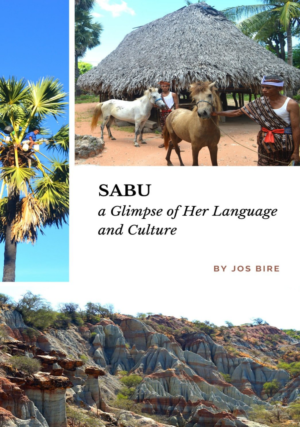In the rapidly evolving field of language education, the need for innovative pedagogical strategies and deeper linguistic insights has never been more pressing. This book is titled “Innovations
in Language Learning: Pedagogical Strategies and Linguistic Insights” is a collaborative effort by lecturers from the English Education Study Program at Artha Wacana Christian University. It brings together a diverse collection of research and practical insights aimed at addressing the challenges and opportunities in modern language teaching and learning. Each chapter explores a unique aspect of language education, offering theoretical frameworks, empirical evidence, and practical applications that can be adapted to various educational contexts.
The book is organized around three central themes: innovative teaching methodologies, the integration of technology and multimedia in language learning, and the role of cultural and linguistic awareness in fostering effective communication. By bridging the gap between theory and practice, this volume seeks to empower educators, researchers, and policymakers with the tools and knowledge needed to enhance language education in the 21st century. It consists of ten chapters, each focusing on a specific aspect of modern language education. In more specific terms, each of the chapters puts forward the following points: Peggy Magdalena Jonathans explores the challenges of teaching vocabulary in English Language Teaching (ELT) and proposes the use of a deep learning approach to make vocabulary acquisition more meaningful and engaging.
The author emphasizes the importance of intentional vocabulary teaching in the EFL (English as a Foreign Language) context, advocating for methods that foster lifelong learning skills. The iii chapter highlights the shift in focus toward vocabulary as a critical component of language learning, particularly in the digital age, where global communication demands a robust vocabulary. Eltina Agustina Maromon examines the role of multimedia in supporting deep learning and its impact on students’ motivation and self-regulated learning (SRL). The author argues that multimedia tools can create interactive and stimulating learning environments, encouraging students to take responsibility for their learning. The chapter provides insights into how multimedia can facilitate SRL practices such as self-assessment, time management, and adaptive learning strategies, ultimately enhancing academic achievement. Focusing on young learners, Erny S. N. Hambandima discusses the use of learning media to create joyful and engaging English instruction.
The author presents findings from a qualitative study conducted at the elementary level, highlighting how media such as colorful images and interactive tools can enhance understanding, participation, and creativity. The chapter offers practical strategies for teachers to make learning more enjoyable and effective for young students. Zuvyati Aryani Tlonaen reviews various instructional models for teaching academic writing, including the Process Based Approach, Genre-Based Approach, Collaborative Writing Approach, Explicit Instruction, and Technology-Enhanced Writing Model. The author identifies the strengths and challenges of each model and suggests that an integrative approach may be the most effective way to improve students’ writing proficiency. The chapter provides valuable insights for educators seeking to enhance academic writing instruction. Yakob Metboki emphasizes the importance of integrating Intercultural Communicative Competence (ICC) into EFL learning, particularly in the East Nusa Tenggara (ENT) context. The author argues that while linguistic elements are iv often prioritized, cultural awareness and competence are equally crucial for effective communication.
The chapter offers strategies for incorporating ICC into curriculum design and instructional practices, highlighting the need for professional development and experiential learning. Festif Rudolf Hoinbala addresses the lack of a standardized language assessment framework in Indonesia and explores the potential of adopting the Common European Framework of Reference for Languages (CEFR). The author examines the benefits and challenges of implementing CEFR in Indonesia, drawing on examples from other Asian countries. The chapter concludes with recommendations for policymakers and educators to ensure a contextually relevant adoption of the framework. Seprianus Arwadi Nenotek and Norci Beeh investigate the use of toponymy—the study of place names—as a pedagogical tool in language education. The author argues that toponymy can enhance vocabulary acquisition, cultural awareness, and interdisciplinary learning. The chapter provides practical applications, such as mapping activities and digital storytelling, while also addressing challenges like regional linguistic variations and data accessibility.
Naniana Nimrod Benu explres the role of the linguistic landscape (LL)—public signage and texts—in language learning. The author highlights how LL can provide authentic language exposure, enhance vocabulary development, and foster cultural awareness. The chapter discusses practical applications, such as project-based learning and digital tools, while also addressing challenges like linguistic inequalities and sociopolitical influences. Thersia Magdalena Tamelan examines the relationship between orthographic transparency and learning in the Rote and Hawu languages. The author analyzes the challenges learners face due to inconsistencies in grapheme-to v phoneme correspondences and emphasizes the importance of a transparent writing system for effective literacy instruction.
The chapter contributes to the understanding of orthographic learning in minority languages. Magdalena Ngongo and Magi Melia Tanggu Rame analyze the use of parataxis and hypotaxis in the Waijewa translation of the Gospel of John. The author employs a systemic functional linguistic approach to examine how coordinating and subordinating conjunctions contribute to the
text’s cohesion and coherence. The chapter highlights the importance of clause relationships in understanding and interpreting religious texts in Indigenous languages. As readers read through the chapters, we encourage to reflect on how these ideas can be applied in your teaching or research context. Language education is not just about teaching grammar and vocabulary but it is about empowering learners to communicate effectively, think critically, and engage with the world around them. By embracing deep learning, leveraging multimedia tools, and celebrating linguistic and cultural diversity, we can create a more inclusive, engaging, and effective learning environment for all. Welcome to “Innovations in Language Learning:
Pedagogical Strategies and Linguistic Insights.” We hope this book will be valuable as readers navigate the exciting and ever-changing language education landscape.






Reviews
There are no reviews yet.